Through the proposal of rich life, the creation of rich forests
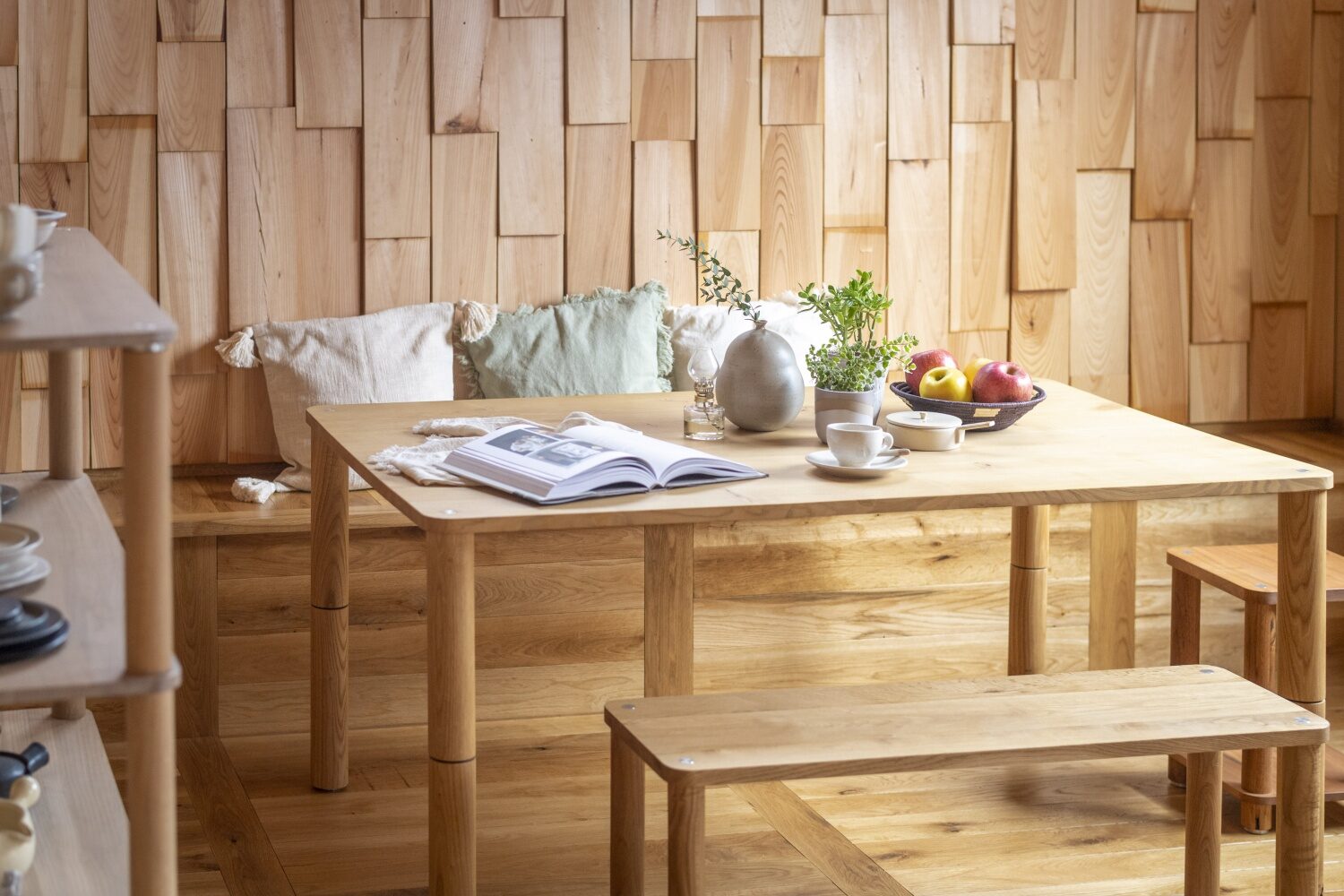
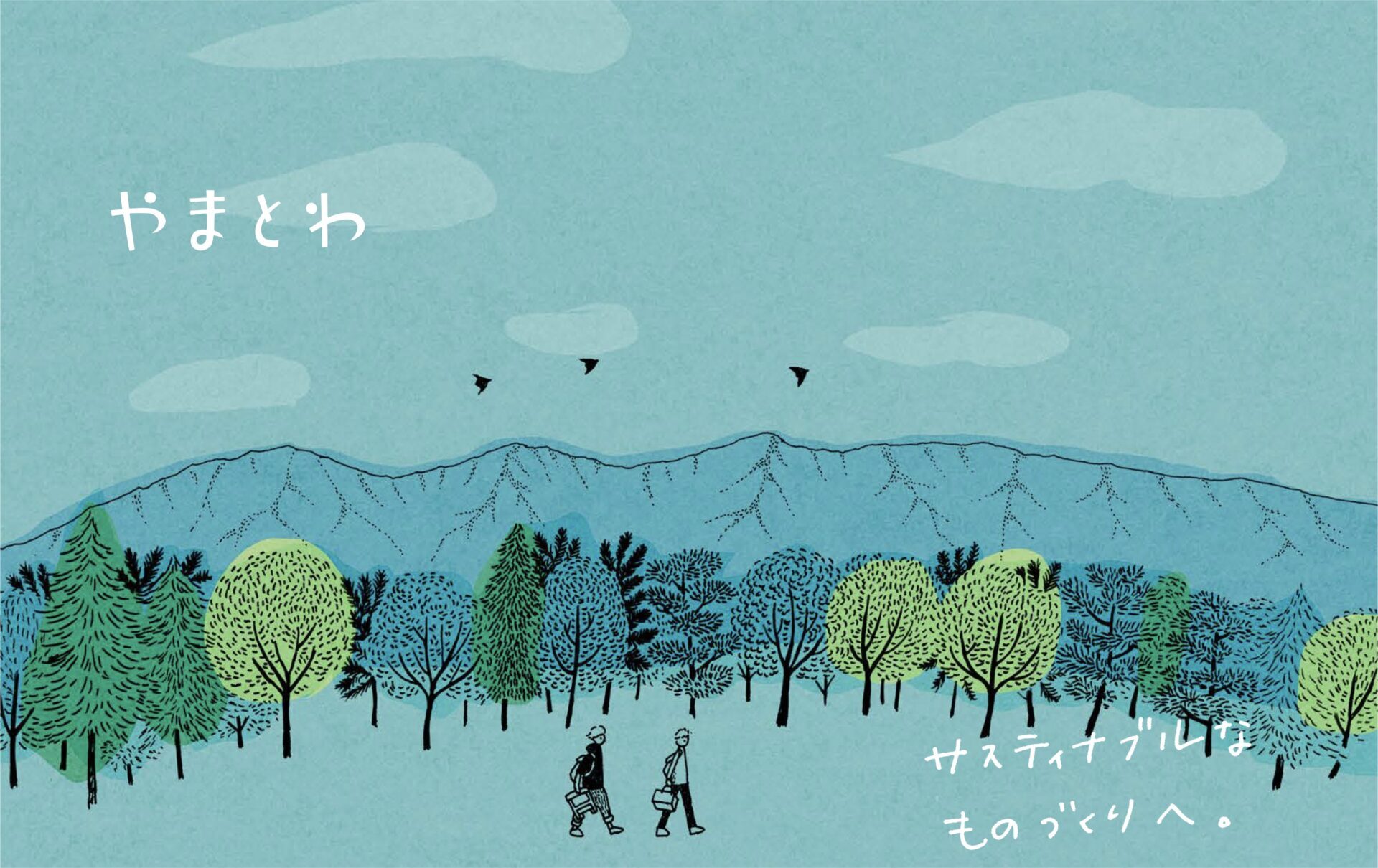
Through the proposal of rich life, the creation of rich forests
Yamatowa is creating a cycle that will change the forests and livelihoods of the Ina Valley in an enriching way. Using local materials and resources, we aim to reconnect agriculture and forestry with people’s lives.
INDEX
1. What we can do to build a sustainable future
2. A Rise in Problems and Artificial Forests due to Underuse
3. Why the demand in manmade forests in Japan grew in the first place
4. Understand the Current and Impact your Choices
5. Actions to De-plasticize
6. From cutting tree in forest, to produce wooden products
1. What we can do to build a sustainable future
Forests are very important to our ecosystem.
It supports the foundation of natural life and beings. Forests store rain while preventing soil erosion. Purifies water while reducing carbon dioxide. The environment is maintained through the interaction of microorganisms and plant habitat. Unfortunately, in Japan today, much of the nation’s forests are becoming dysfunctional.More, now than ever, we need to examine and take this opportunity to coexist with forest life.
Globally, forests continue to disappear every second of the day. In fact, between 1990 and 2015, 12,900 million hectares of forest have been recorded to be lost and de-forested.*
In order to create a sustainable future, a shared global effort has been put forth to protect and nurture the world’s forest environments.
*Global Forest Resources Assessment 2015
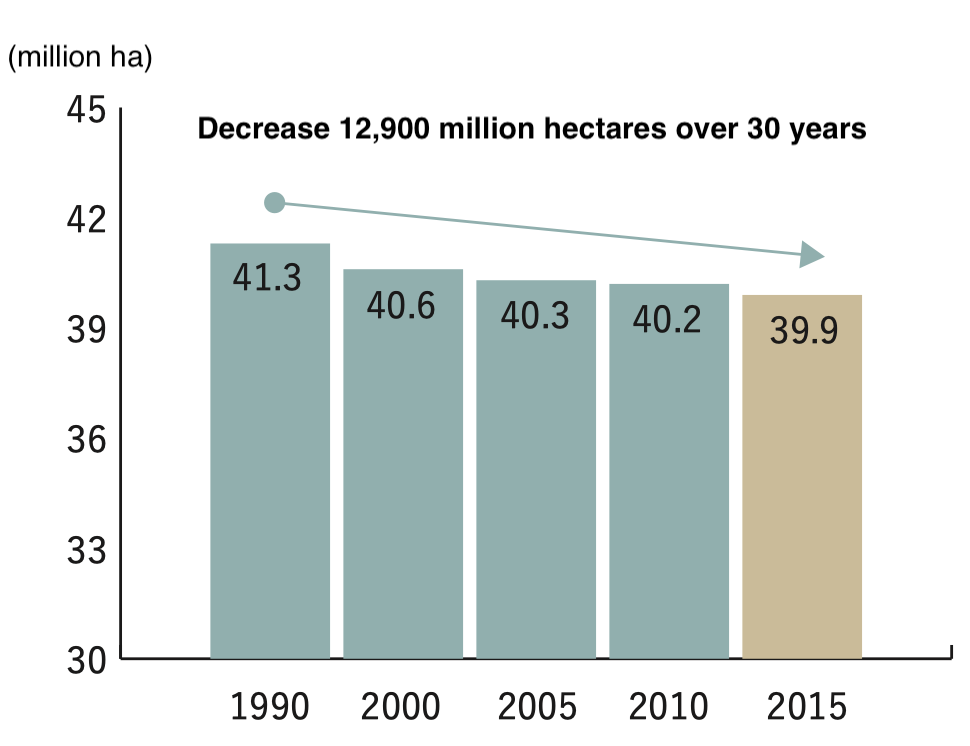
There may be a general thought that comes to mind when we think of forest trees: “Trees should not be cut down, and we should prevent deforestation”. But we need to look at the bigger picture and understand the issue at hand. It is both important to understand the topic in the global and local context.
In Japan, the issue caused from the overuse of forest trees is occurring in a completely opposite vector as compared to the global forest problem. Underuse is the problem, and this is caused from the abandonment of the land where trees are left and untouched, uncared for.
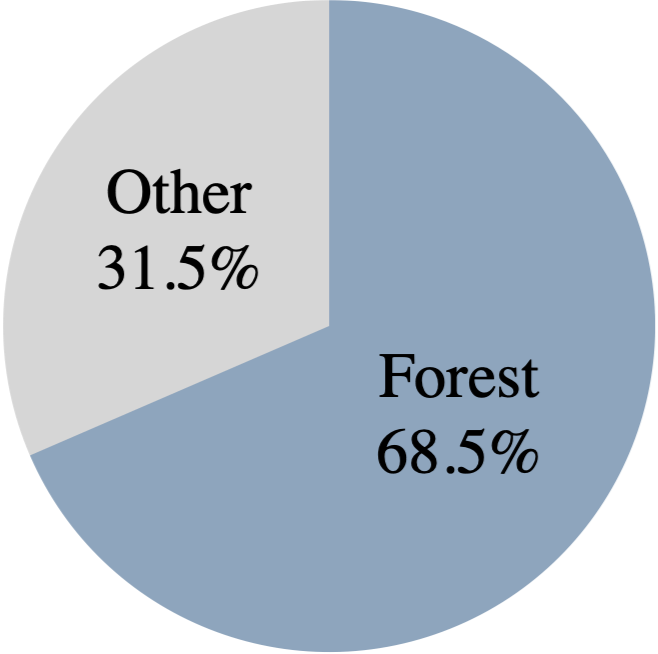
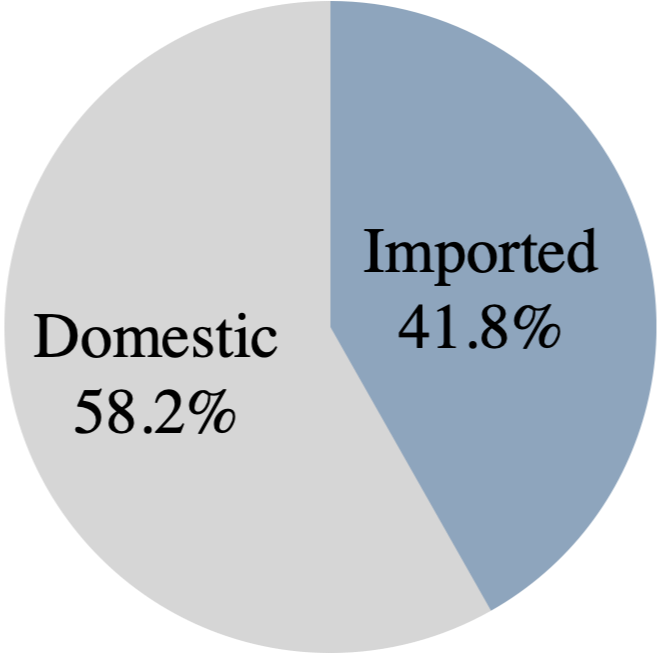
Japan is one of the world’s leading countries with forestation, with forests accounting seven percent of the country’s overall land (coming in third after Finland and Sweden). In addition, Japan is known to be a country where forests are most easily grown.However, the wood self-sufficiency rate is approximately 36%. In reality, Japan’s reliance on imported wood is as high as 70%.
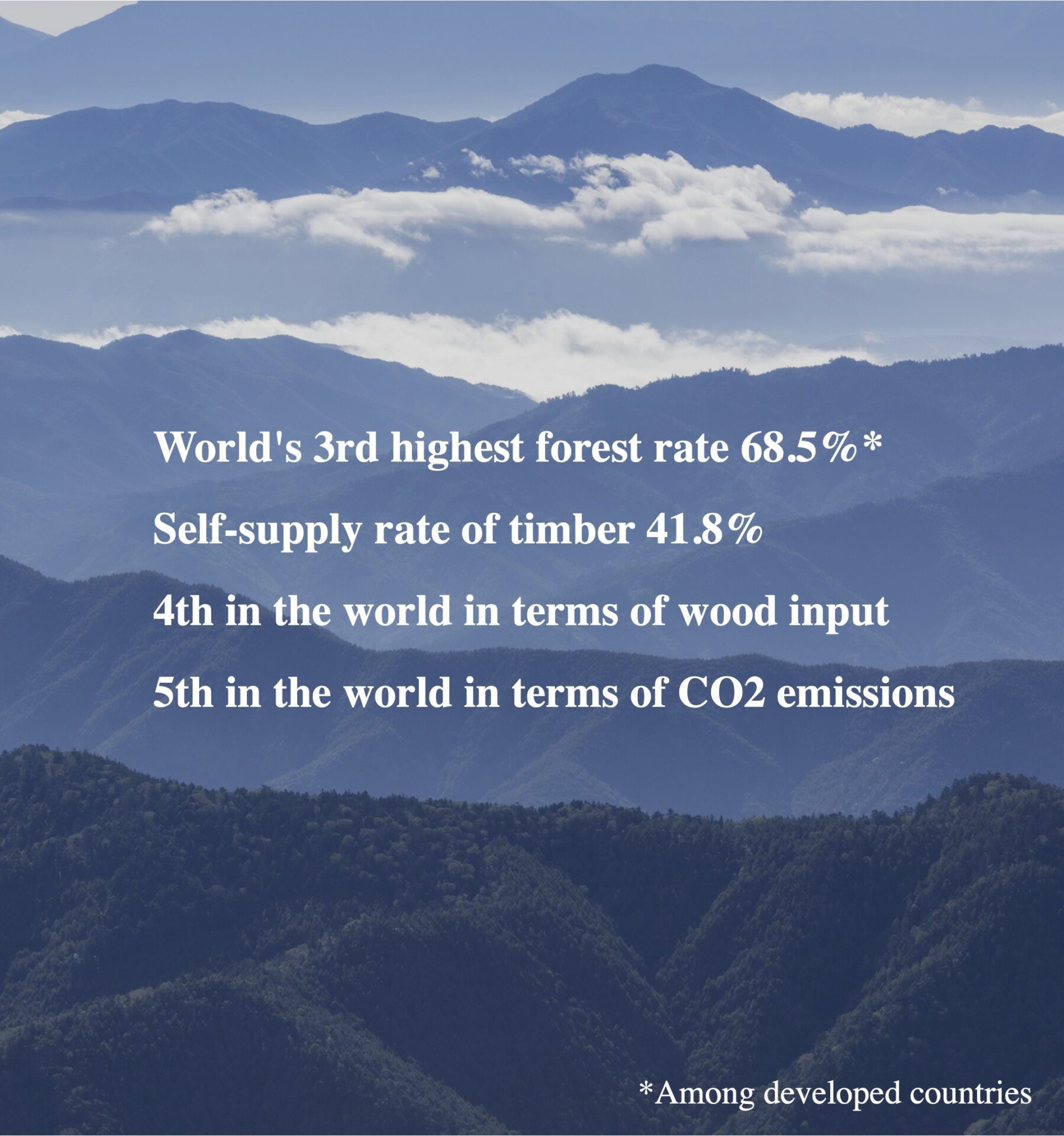
Although Japan is known as a forest nation, and all of its environment invite the growth of trees, there is too little awareness on the use of domestic timber. Much of reliance is on imported wood. This has been recognized as the main contributing factor to Japan’s deforestation. Japan needs a change, both in system and mindset, to properly address the use of domestic forest resources.
We believe that by creating a new standard, this is how we can contribute to the conservation of forests all around the world.“Use Local, From Local” and “From Japan, In Japan” are positive and forward-thinking ways we can use, to revisit the relationship we have with forests in our every day life.
Yamatowa Co., Ltd. ‘s corporate philosophy is grounded in “Creating a Lifestyle which impacts forest life positively.” We aim to put forth a system that inspires a fulfilled and happy lifestyle for us, and for Japan’s forests, resulting in global impact.
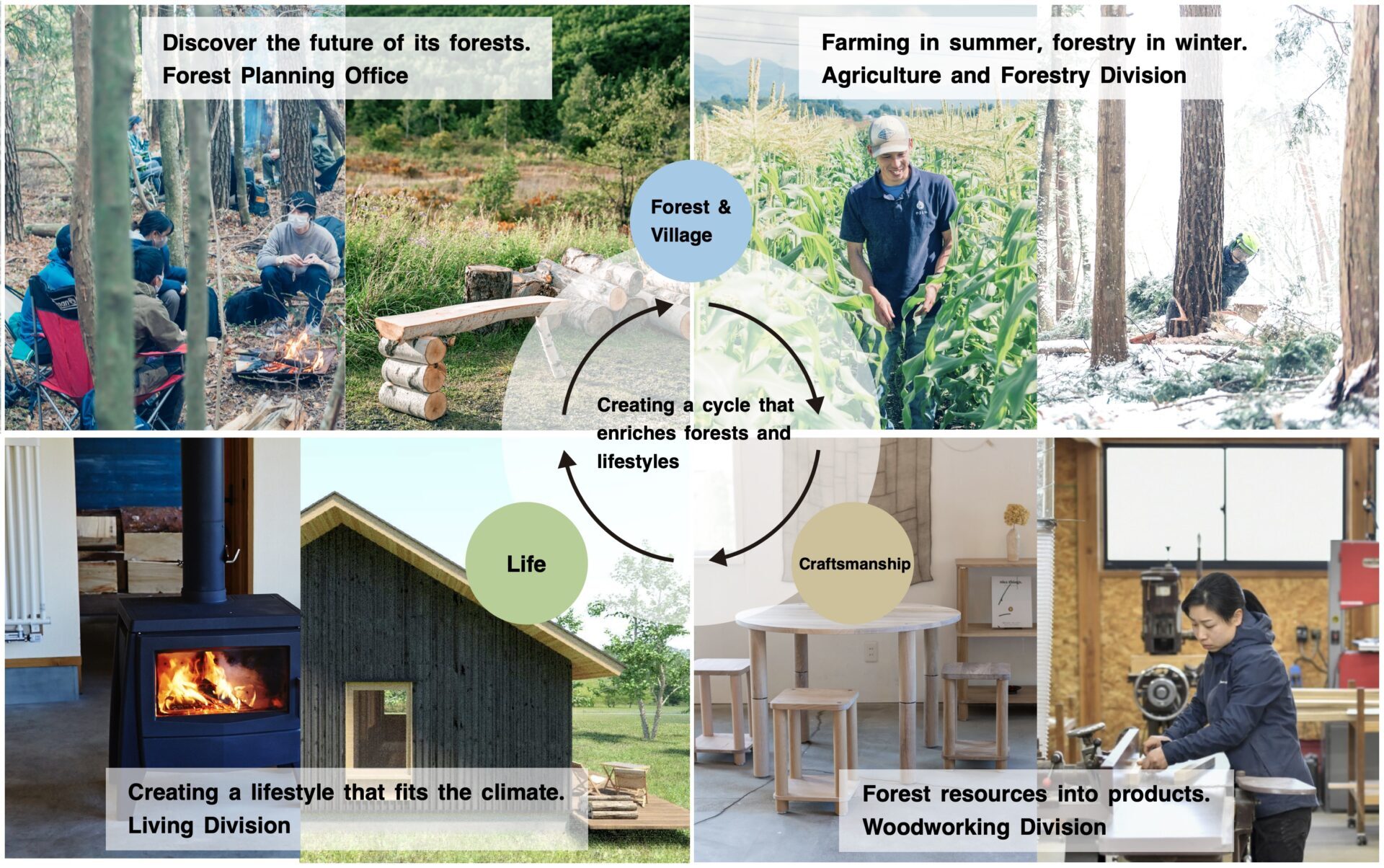
INDEX
1. What we can do to build a sustainable future
2. A Rise in Problems and Artificial Forests due to Underuse
3. Why the demand in manmade forests in Japan grew in the first place
4. Understand the Current and Impact your Choices
5. Actions to De-plasticize
6. From cutting tree in forest, to produce wooden products
2. A Rise in Problems and Artificial Forests due to Underuse
In Japan, the underuse of forest resources has caused another forest problem. It caused by the growing number of artificial or manmade forests that have been abandoned and left uncared for.
Let us explain some more around manmade, artificial forestry.
An artificial forest is defined as forests that has trees which have been planted by human hands, mainly for the purpose of timber production.About four percent of Japan’s forest landscape is made up with artificial forests and have been designed by humankind. After cutting the original trees found on the land, the forest is cleared and new trees are planted. The way the trees are planted are overcrowded. For example, suppose you plant trees in a forest of 100 square meters.Typically, cedar and cypress wood would be planted for production of building materials. These trees planted, would take up to 60 years until it was ready to be cut down and made into timber. In order to produce good quality trees in over a 60 year span, on average about 400 to 600 trees would be planted.Varying in region, some would plant 2000 to 5000 trees, and in others even high as one million trees have been planted.
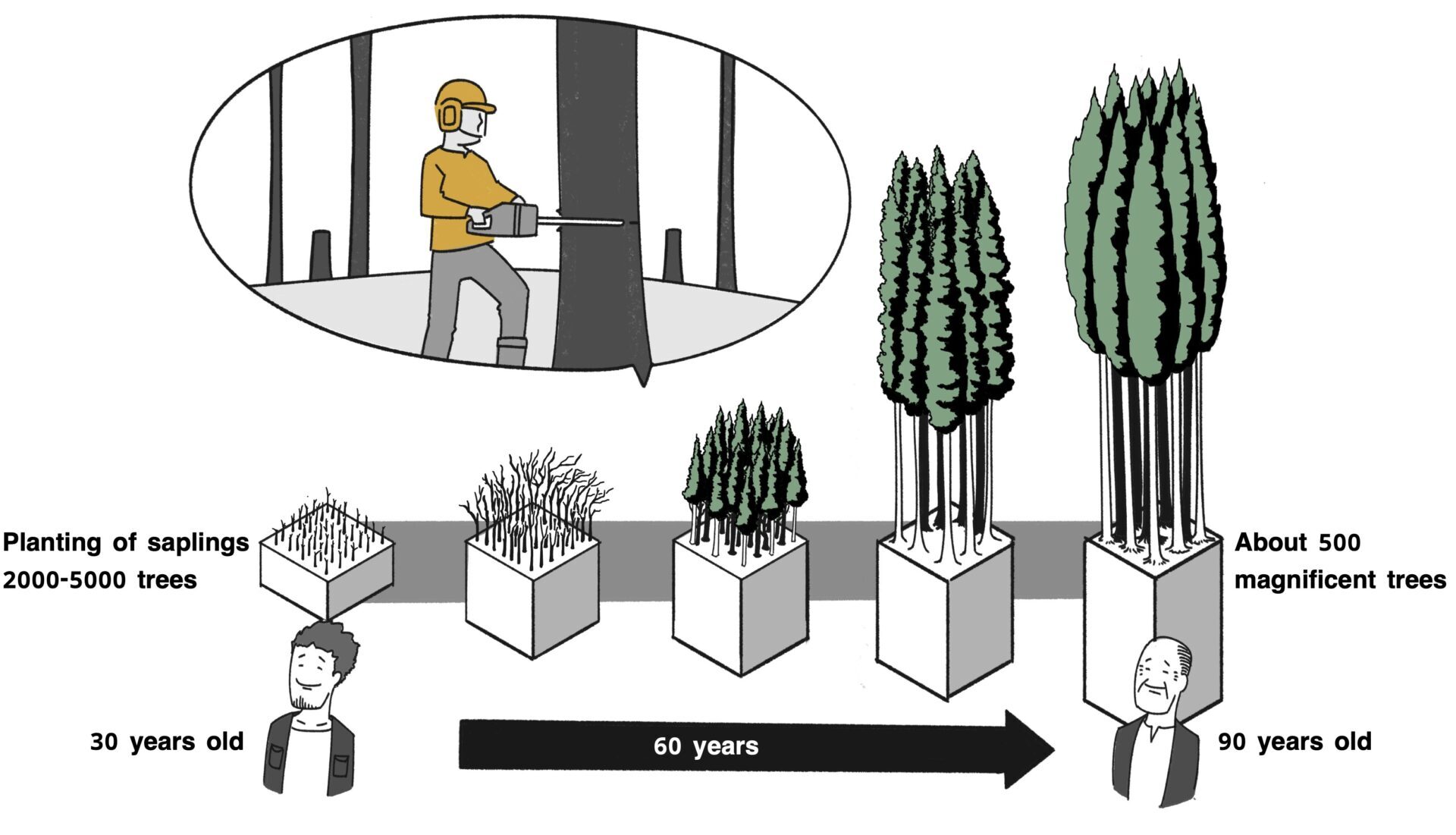
For the first several years after the planting of the trees, it is necessary to cut and care after the grass and weeds that surround the trees, as the weeds can take over.After eight to ten years after planting the trees, the first thinning process is carried out.
Forest thinning (“kanbatsu” in Japanese) is a process that leaves the good trees to be grown and removal of the unwanted trees. (It is a similar process of planting many seeds at the beginning and then removing the extra sprouts to prevent an overcrowded environment).
After this first thinning, the removal of the trees is done every five years. By the time sixty years have passed, if done properly, about 500 healthy trees would remain. With a manmade forest, the planting of trees and overcrowding was primary strategy in place, and with that, the long after care would have to be in place in order to produce good domestic timber.
60 years passed after a young tree has been planted. Let’s say that you were 30 years old when the tree was first planted. This same tree would be harvested when you are 90 years old.With some trees, it would take up to 80, 100, 200 years. With this in mind, forestry is very much linked to our future. For the next generation, and the generations to continue, the planting process and the aftercare is an important, challenging and beautiful part of forestry.
INDEX
1. What we can do to build a sustainable future
2. A Rise in Problems and Artificial Forests due to Underuse
3. Why the demand in manmade forests in Japan grew in the first place
4. Understand the Current and Impact your Choices
5. Actions to De-plasticize
6. From cutting tree in forest, to produce wooden products
3. Why the demand in manmade forests in Japan grew in the first place
During the post-WWII reconstruction period, an expanded afforestation policy was adopted in response to the rising demand of timber. With this policy in order, with not my regulation in mind, cedar and cypress trees were planted all over Japan. Coinciding with the rise of manmade forests, there were local trees planted. For example, where our company is located in Nagano prefecture, Japanese larch “karamatsu” trees were planted in large volumes and still remains in the local landscape.
It would have been wonderful if the after care had continued after the planting of the trees, but unfortunately this is not the case. Over time, the forest became unmanaged and has been left unattended.
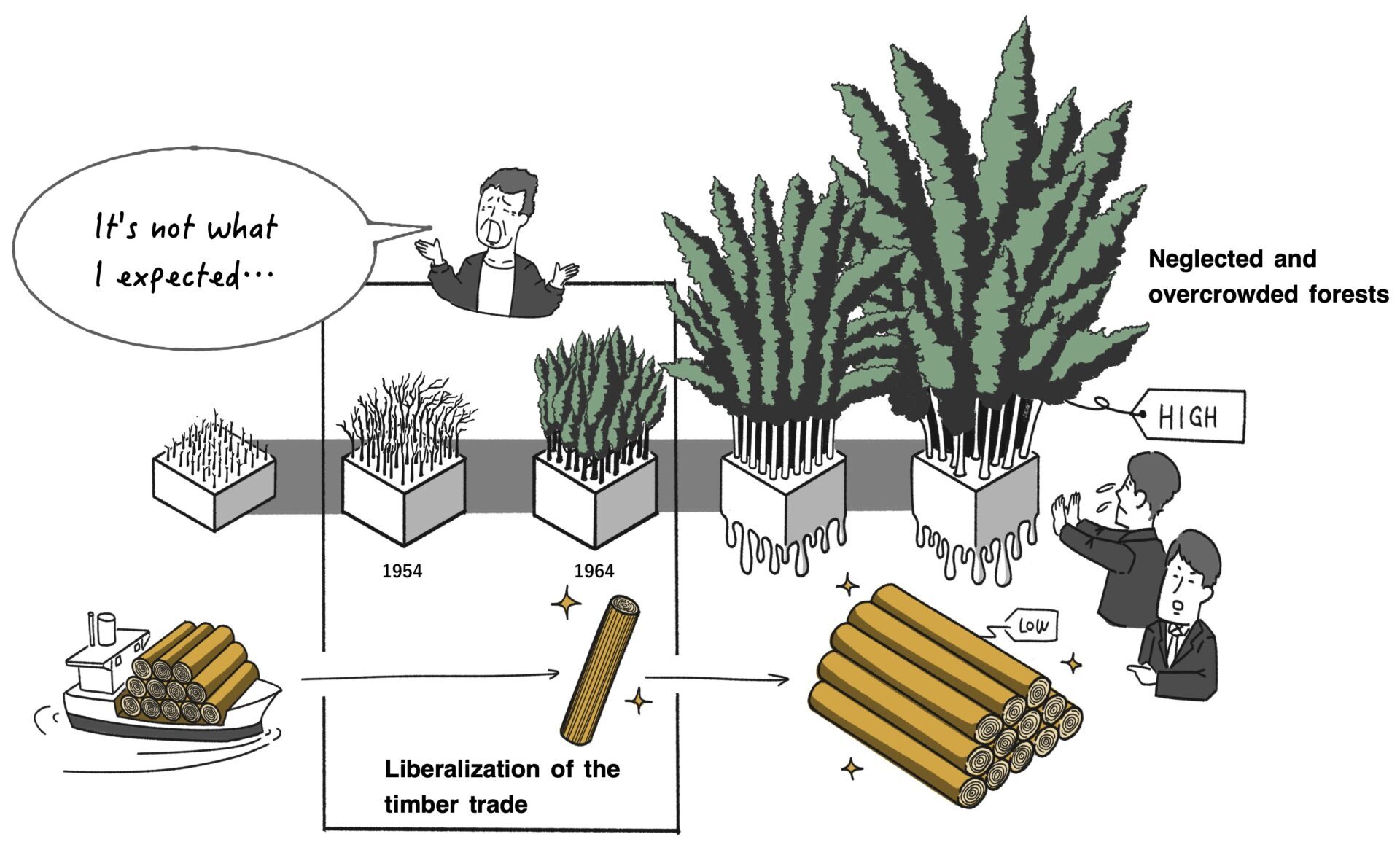
One of the reasons was due to the elimination of log tax tariffs in 1954. At that time in Japan, much of the timber had been used in our daily lives, such as telephone poles, inside of trains, and energy sources for construction. Due to the increase in demand, the supply of domestic timber could not keep up, and tariffs were abolished in order to increase the import volume of foreign timber. And in 1964, the year of the Tokyo Olympics, the timber trade was completely eliminated.
In 1954, the timber self-sufficiency rate was as high as 95% in 1954, but with the elimination of the taxes, the rate declined and bottomed out at 18.8% in 2002. As price competition with foreign timber and market prices continued to decline, forestry became no longer relevant as an industry.
Citizen that owned mountain land gradually stopped investing in forest maintenance because of the running cost. They thought that even if you cut down trees and sell them in the market, you would end up loosing money. Of course, this is not the situation with all forests, and there are still many wonderful mountains that are still under management. However, in most cases, the forests have been left overcrowded and has resulted in an unhealthy state of the land.
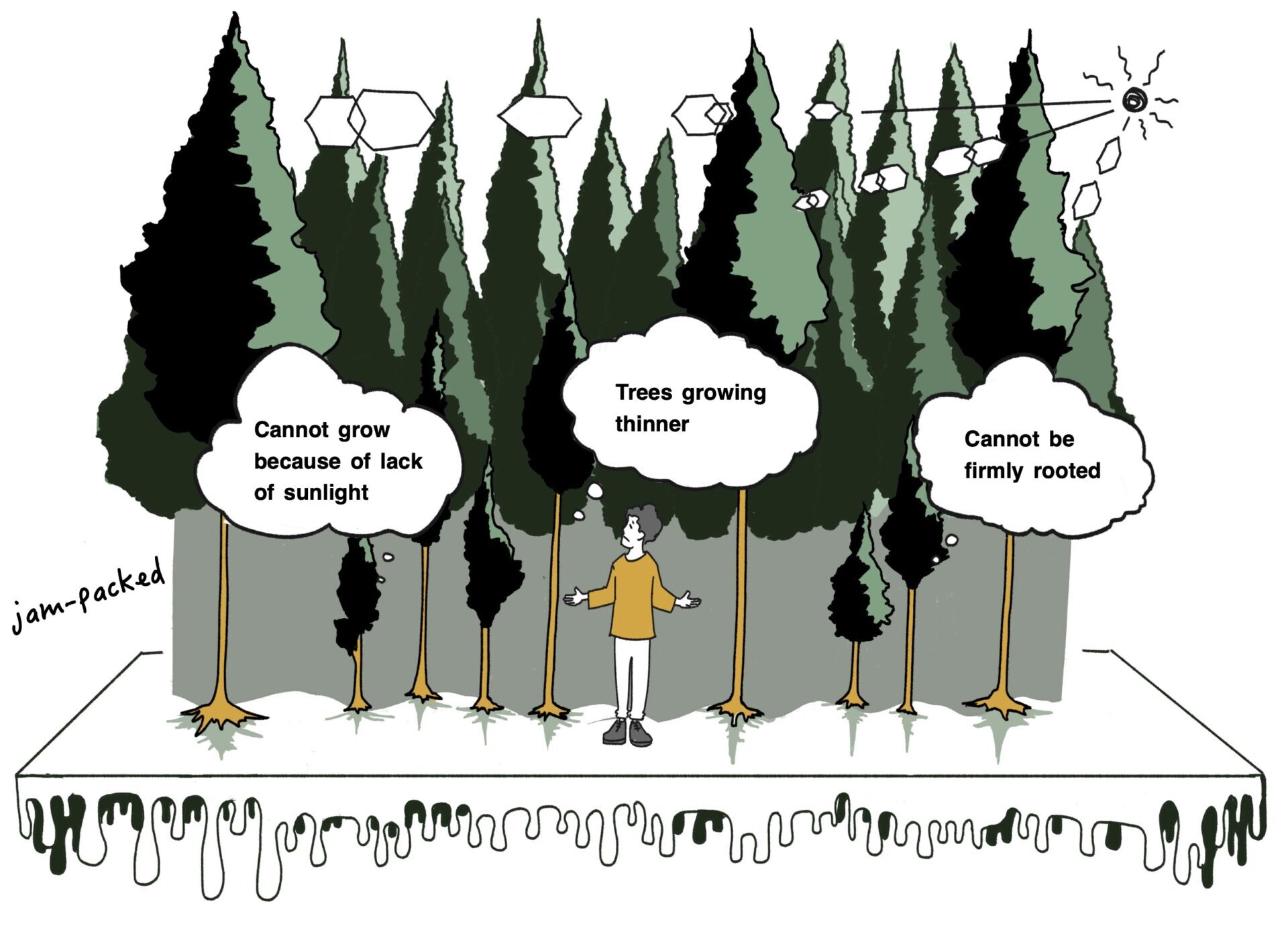
The environment of an abandoned forest is very dark with no light shining in.Plants do not grow in this kind of environment and biodiversity is not maintained. In addition, a tree that grows in an overcrowded state cannot grow its roots firmly because the neighboring tree is close to it, which slows down the growth of the tree. Most of the trees in the abandoned forest grow weak and thin.
In addition, trees with weak roots have less ability to impact the soil positively, increasing the risk of sediment-related disasters and landslide. Different from the landscape you see aboard which has forests on flat land, Japan’s forests have their trees planted steep terrain and are prone to landslides. It’s hard to imagine that our Japanese ancestors took risk to planted young trees on steep slopes and mountains.
INDEX
1. What we can do to build a sustainable future
2. A Rise in Problems and Artificial Forests due to Underuse
3. Why the demand in manmade forests in Japan grew in the first place
4. Understand the Current and Impact your Choices
5. Actions to De-plasticize
6. From cutting tree in forest, to produce wooden products
4. Understand the Current and Impact your Choices
We would like to restore the health of Japanese forests and create a responsible resource relationship overseas. Some of the imported timber and timber products we unknowingly use include illegally logged timber. As recorded in 2012, it is estimated that 50% to 90% of the timber produced in major tropical timber producing countries was illegally logged, and 15% to 30% of the world’s timber was illegally logged (G8). Ellmau Summit, 2015.06).
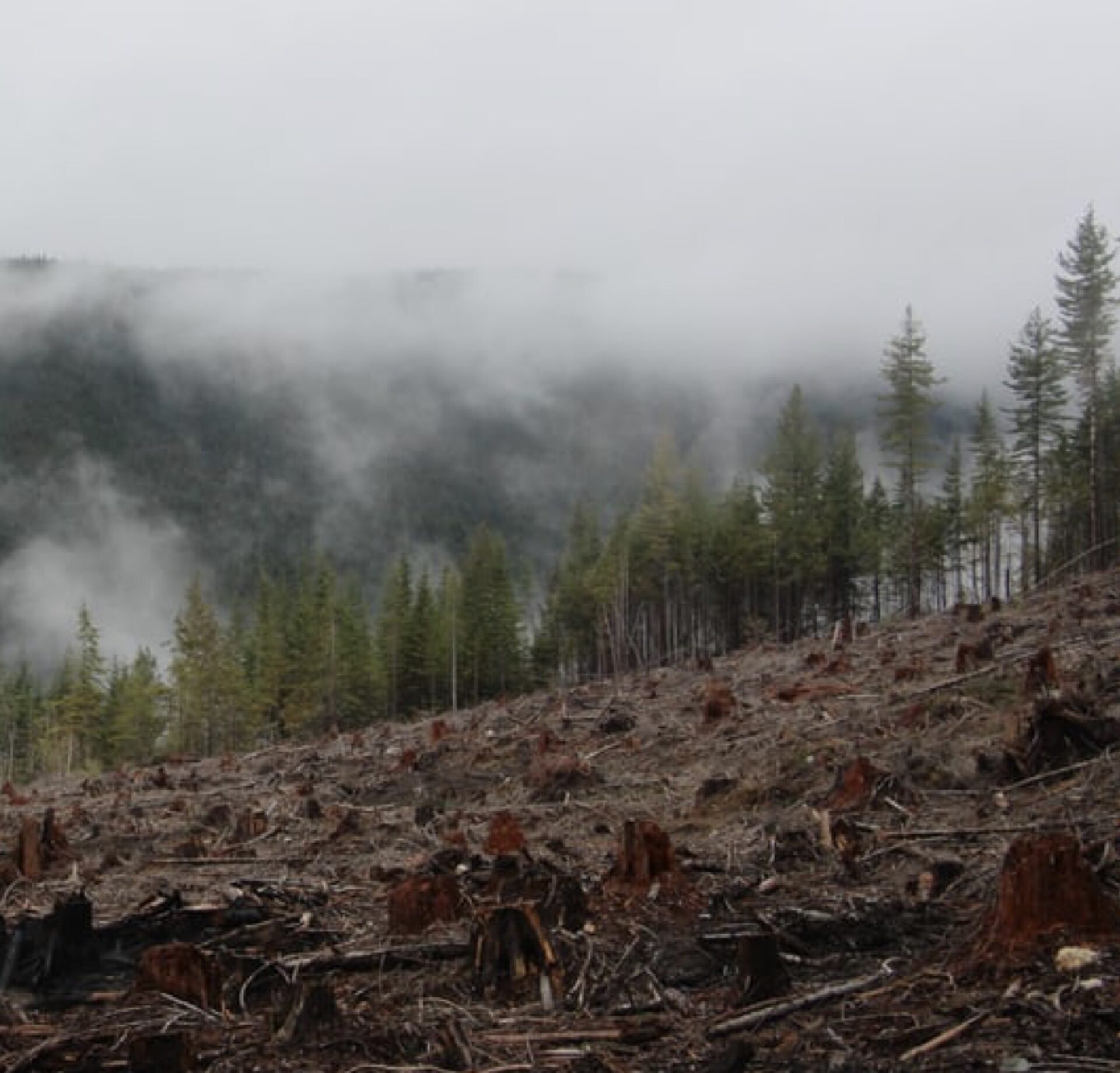
In other cases, even if it was not illegal, much of the timber is imported from areas where it is difficult to reproduce forests. That is why in Japan, it is important to gradually expand the mindset of “using local trees, locally” and “the use domestic trees, domestically.”
Where humans got involved with the forest in the past, they need to, now, get involved with the forest again. It is easy to put into words, but because we have Mother Nature to work with, it is easy said than done. Because, this situation has been the doing of many years and history behind, it will take as long or even longer to undue the doings of what our past ancestors have put into place.Even this is the case, we have no choice but to move forward and take each issue and solve them one by one.
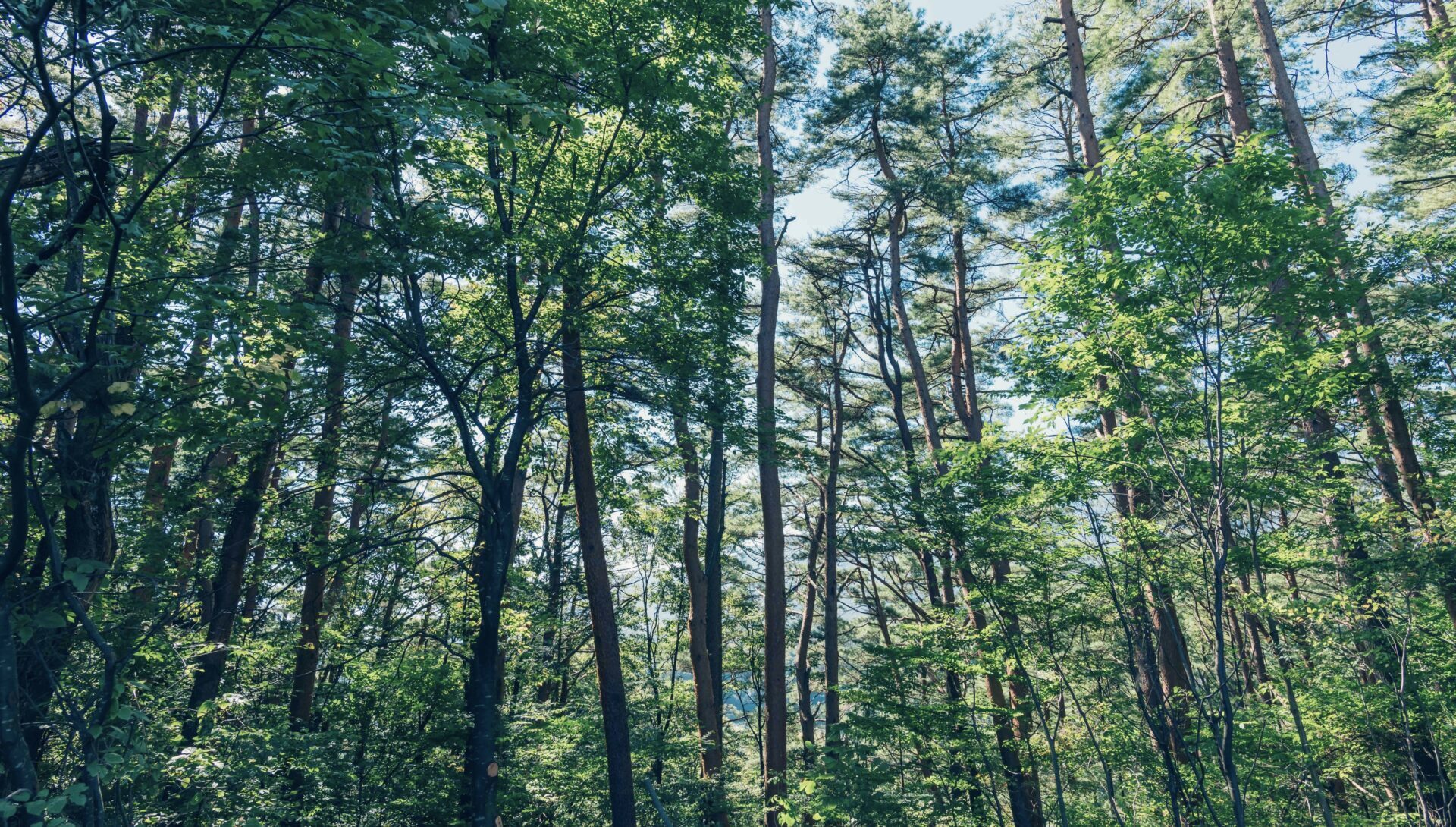
In order to create a sustainable society and future, we are taking on the challenge of creating a new standard for the future of forests.
We need to prevent from history repeating. To prevent the history that involved the abandonment of our forest land due to the drop in demand and price from 50 years ago. The relationship we have with our land should not be swayed or changed because of the drop in monetary value, but really see the value behind each tree and forest for what they really are. They shouldn’t be abandoned due to societal circumstances and human benefits.It is important that forestry as an industry work with and collaborate with other industries.
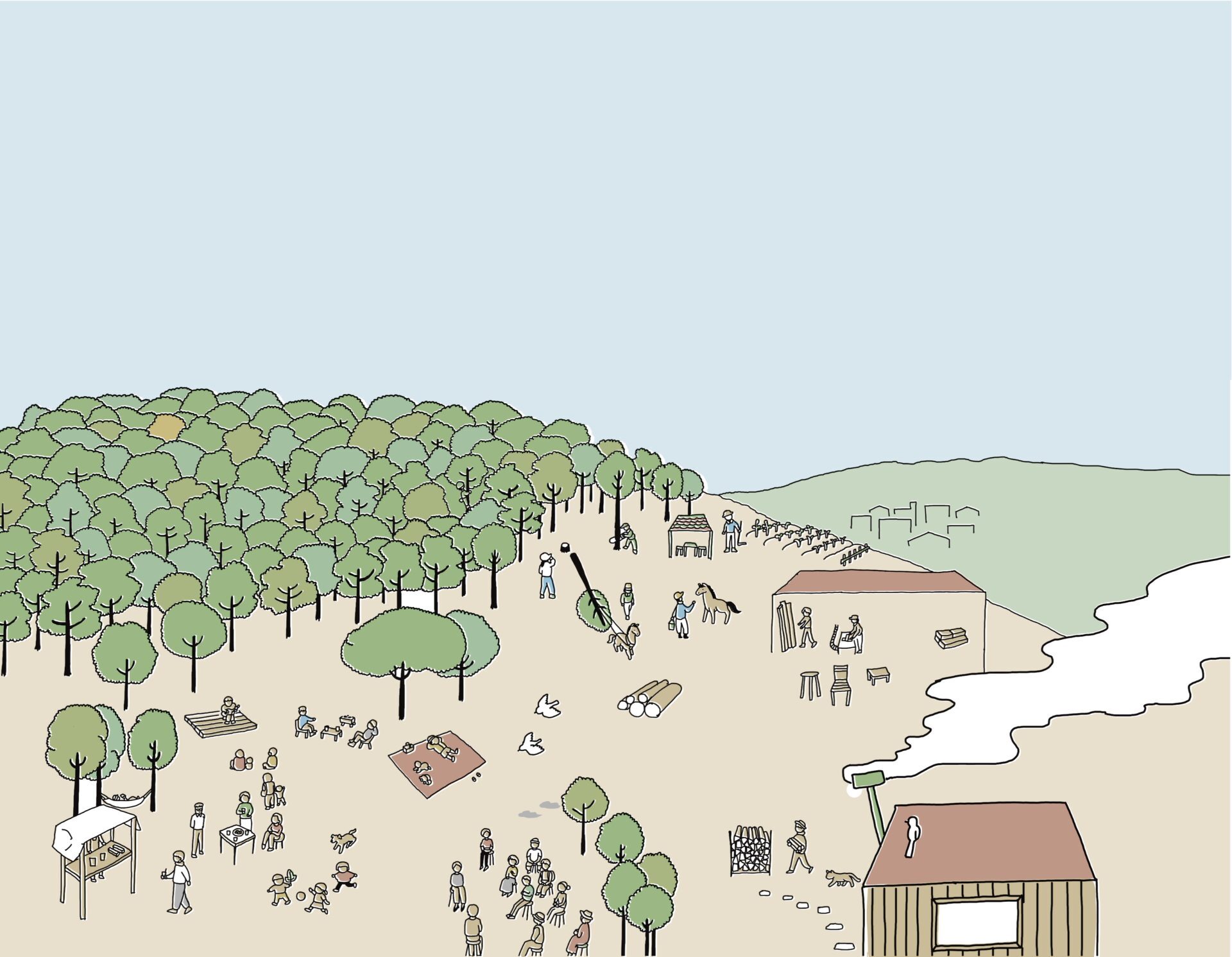
This is what we can start to do, to create a sustainable environment for the future. This is to understand the history, the present so we can make informed choices that will impact the future.
Let us introduce our first step in making an effort to do this through our product line.
INDEX
1. What we can do to build a sustainable future
2. A Rise in Problems and Artificial Forests due to Underuse
3. Why the demand in manmade forests in Japan grew in the first place
4. Understand the Current and Impact your Choices
5. Actions to De-plasticize
6. From cutting tree in forest, to produce wooden products

5. Actions to De-plasticize
Approaches to De-plasticization New Value Created by Traditional Packaging Materials
Shinshu Kyogi – Shiki

Traditional Eco product
Kyogi is the traditional eco product produced with Red pine. In the process of society shifting away from plastic, we are proposing the use of Kyogi, a traditional energy-saving product, including how to use it.

Energy-efficient production
The logs of red pine are cut, shaved, and dried to produce Kyogi. While ordinary wood products must be dried thoroughly after sawing before they can be used as a material, this process is not necessary in Kyogi production.The wood is taken from the forest and used as it is, and dried for one to two days after cutting, so relatively less energy is required. No additives or paints are used, so it is a recycling-oriented product that returns to nature as it is.

INDEX
1. What we can do to build a sustainable future
2. A Rise in Problems and Artificial Forests due to Underuse
3. Why the demand in manmade forests in Japan grew in the first place
4. Understand the Current and Impact your Choices
5. Actions to De-plasticize
6. From cutting tree in forest, to produce wooden products
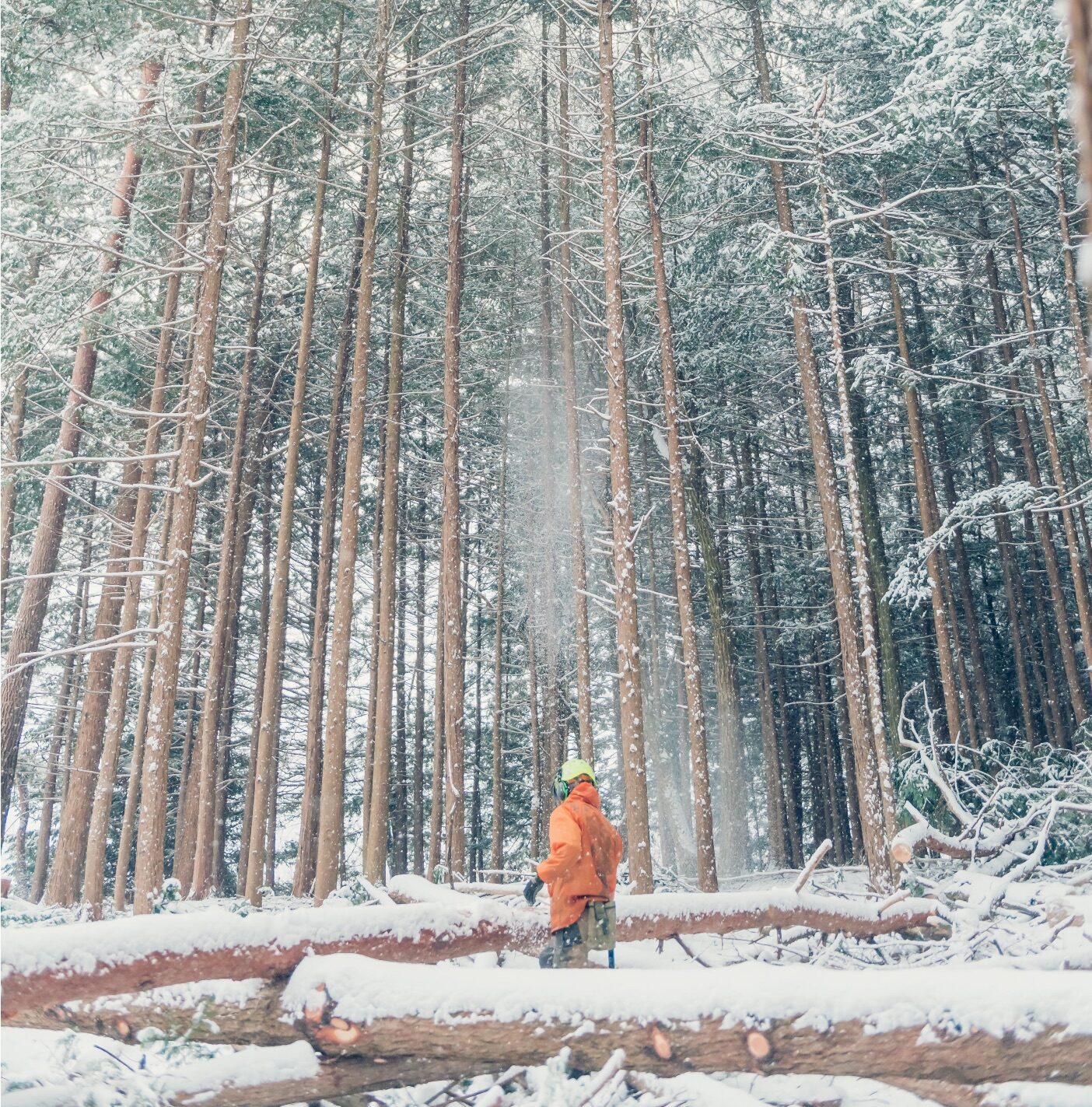
pioneer plants

Traceability of materials
All of the wood used in Yamatowa’s woodworking can be traced back to the forest where it was cut, by whom, and by which sawmill it was milled. We believe that sustainability is ensured by traceability.
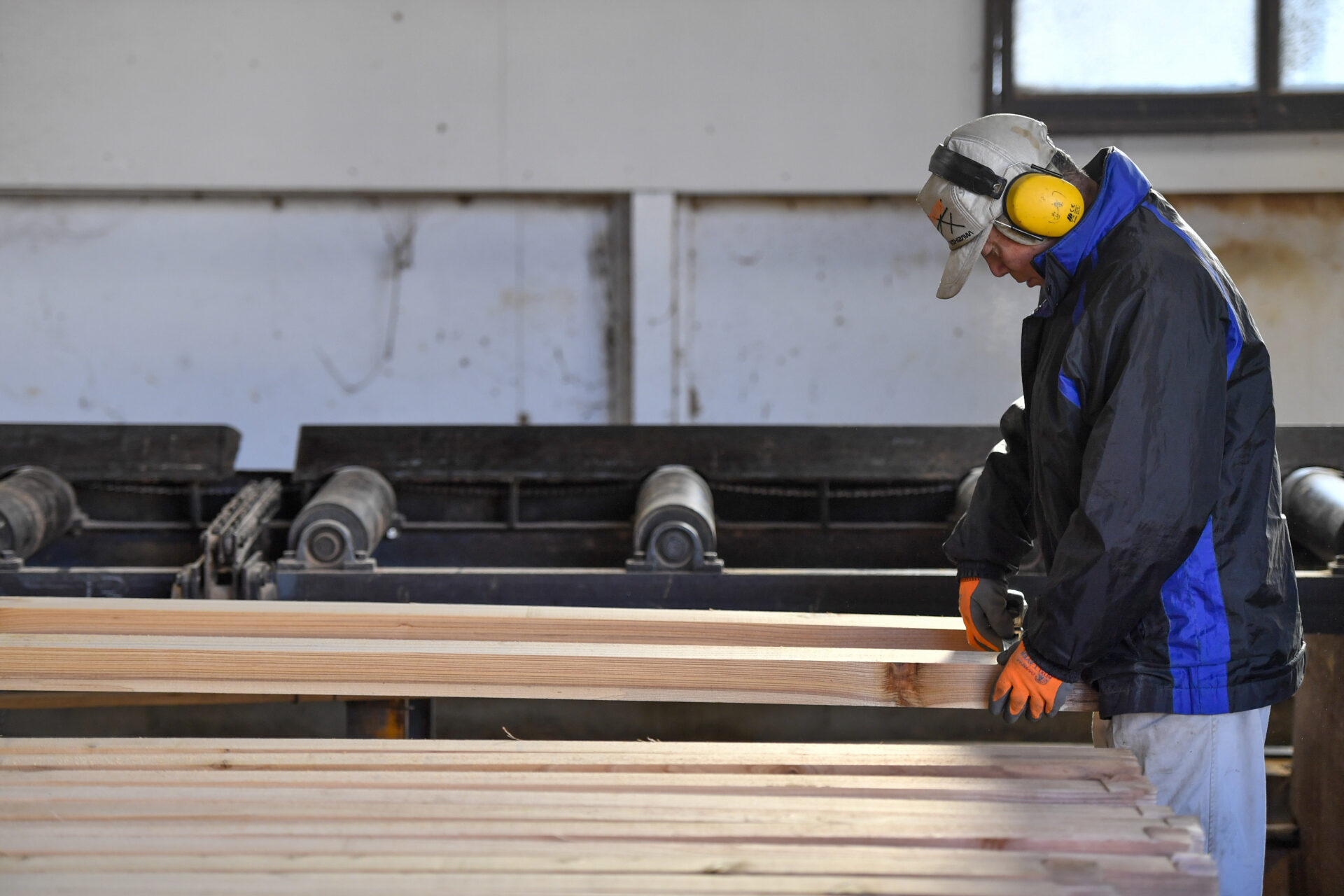
Pioneer Plants are all manufactured with Red pines
Why do we use red pine? There are three reasons.
The first is that the Japanese red pine is a pioneer plant* suited to the climate of the Ina Valley. The second reason is that red pines are suffering from “pine wilt” throughout Japan.
Pine wilt is caused by a wood nematode (a parasitic nematode of trees) called the pine bark nematode. The disease started in lower elevation areas and has spread to Shinshu as well. However, there are still many healthy red pines remained.
That is why we want to use the red pines NOW. We want to breathe the next life into the red pine before it dies out.
Third, we want to enrich the forest by creating “use options” for local trees, including the red pine. *pioneer grasses and trees that grow on bare ground.

